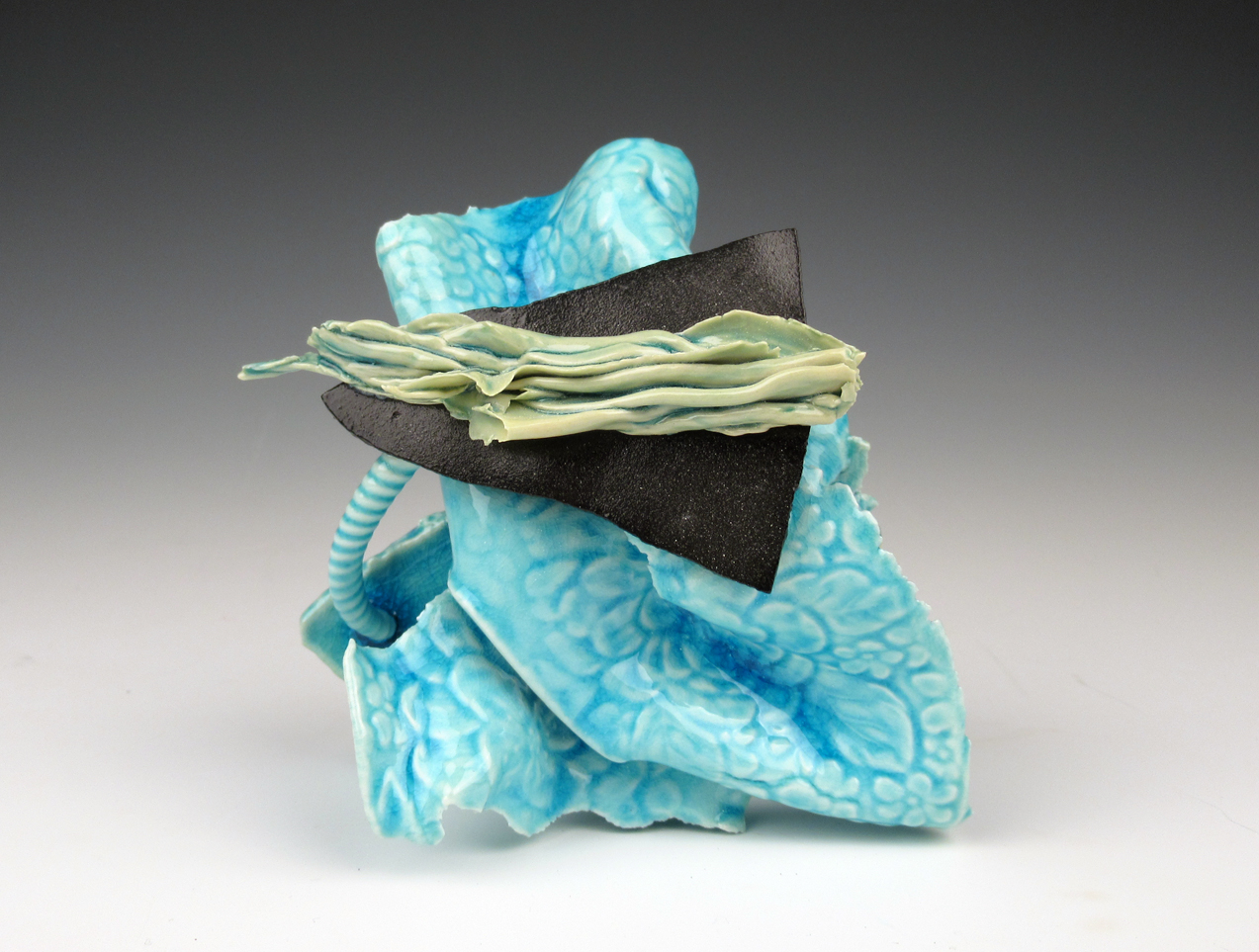Tracing Paths
Paul Robles and Lin Xu
Curated by Steven Leyden Cochrane
May 3–June 28, 2019
C2 Centre for Craft
Tracing Paths is a two person show exploring the craft of Lin Xu and Paul Robles curated by Steven Leyden Cochrane. A path is created through repeated action—intentional with a direct purpose or carved through the unforeseen rhythms of our lives. Tracing paths reflects on the journeys and pathways in Roble’s and Xu’s work, paths that connect and diverge confronting the past to find a way forward with newfound clarity.
Paul Robles creates beautiful paper cuts using a knife to carve out minute sections of paper. What remains is a delicate lace-like image that flows with texture and pattern. Viewers can lose themselves in the precision and intricacy of his craft and the imagery formed. Paul’s work explores topics of trauma, grief and sexuality through his paper cuts, with viewers seeing images intended by the artist and finding their own imagery in the slivers cut away with his steady hand.
Lin Xu’s ceramics are created from bits and pieces from past projects, finding the beauty in all that comes out of her studio. Lin intuitively assembles, glazes and fires her pieces with a mutual respect for her materials. The result of her efforts is either a new artwork or material inspiration for new ideas to spring from in the future. Her work explores oasis, rest and sanctuary from our busy world, all built in collaboration with her treasured studio castoffs. Her delicate arrangements show hints of the past celebrated and unified in the present.
Graphic design by Urbanink
A Path
Curatorial Statement
A path is the product of invention and repetition, memory and imagination, a history of collective desire held in the mind and written on the ground.
Lin Xu reinvents historical patterns through the processes of making, deftly guiding mechanical, chemical and sedimentary transformations.
Paul Robles guides his knife with a practiced hand, moved by intuition and tradition, reimagining once-familiar images over focused hours cutting paper.
Minds change, bodies move; the land remembers. A shortcut snakes across the grass one summer. Ancient roadbeds reappear in drought or after rain.
Water cuts its own path through the sand, but to persist and to sustain, the oasis must be cultivated.
The brain sees a face where there isn’t one, so obdurate the neural pathways and
so urgent the desire for something to meet our gaze.
Material has its own sense of direction, orients along its own desired paths.
The memory of clay accounts for both its brittleness and strength. In the kiln, stacked fragments forge alliance, held in place by gravity and glaze.
We see paper’s memory in each indelible, dividing crease. Its toughness, so suited to wrapping and record-keeping, erodes with every fibre cut.
A path divides, but a path can be retraced. Once cut, “this” and “that”, like “there” and “back,” are matters of perspective.
Scraps and shavings blossom into porcelain roses, rejecting “keepsake,” “castoff,” “ornament” and “accident,” among other names.
Grotesque menageries emerge from holes in butcher-paper masks. Black “window flowers” grow from accumulated absences. Screens project as readily as they conceal.
Points on a line describe a path: images and forms strung like beads, familiar in the hand, fruit on a vine to be plucked from the air.
Trace the contours of a bottle gourd, drawing it up from the potter’s wheel. Draw on muscle memory of dumpling folds to form a porcelain pillow.
Probing Rorschach sprays of lacy perforations, zodiac animals, foxes, rams and serpents peer back amidst the blinking eyes of peacock feathers.
Some paths connect. Others are borders.
Forms and colours migrate, resettle and adapt to new configurations, radiate like imitation celadon from scattered Silk Road outposts.
Ideas and images persist, surviving relocation, translation and conversion. A good path can get twisted, a winding path eventually comes to rest.
Paths collide, entangle, wear away, grow over. Durable and fleeting, to serve as guides they must be trod and tended.
Xu’s repetitions and transformations produce dream logic, echoing the unconscious durability and plasticity of the mind and offering assurance that things might fall in place.
We don’t see Robles in the “faces” of his finished masks, nor is he hiding behind them. Instead, identity is ambivalent, a trajectory continually adjusted with every surgical cut.
Steven Leyden Cochrane









